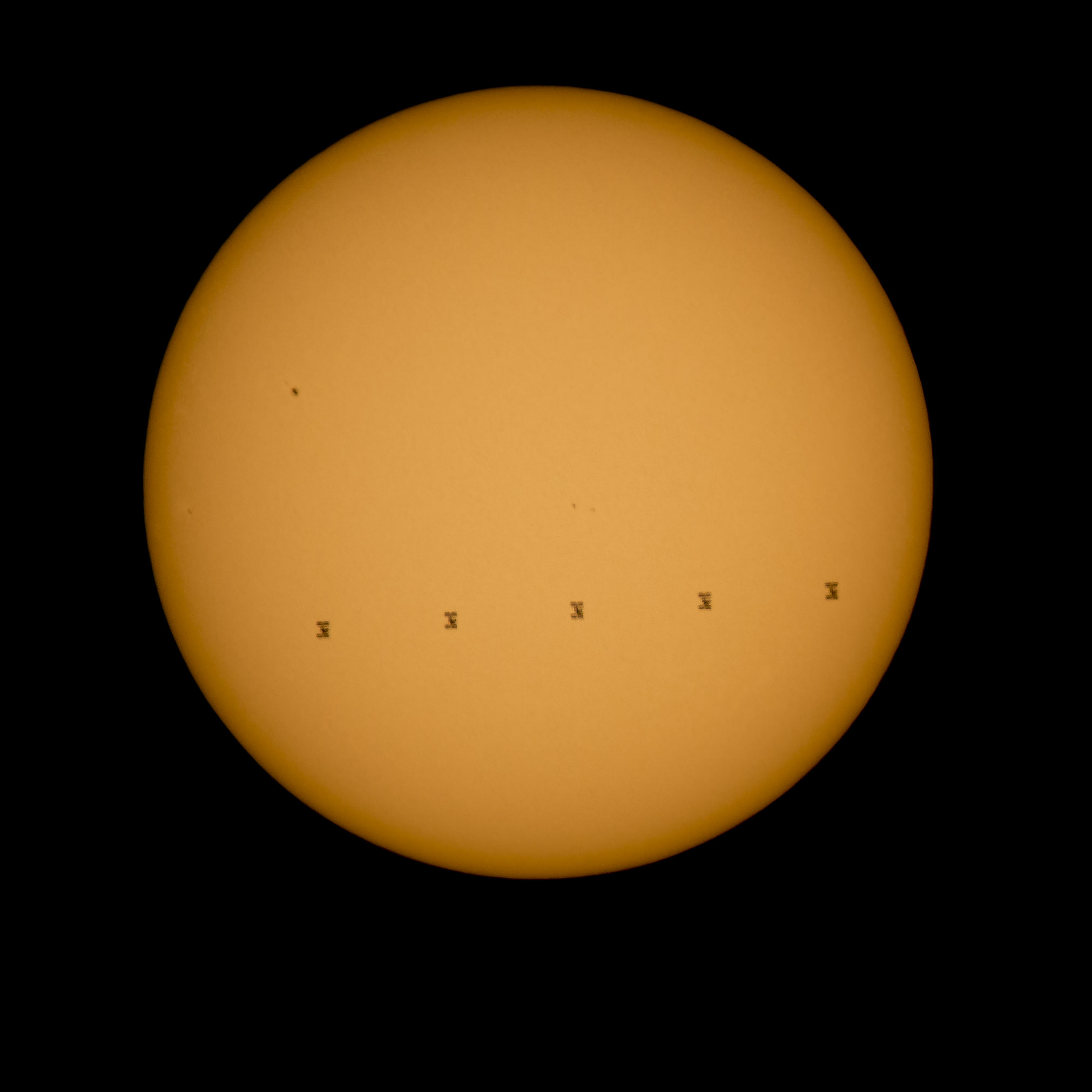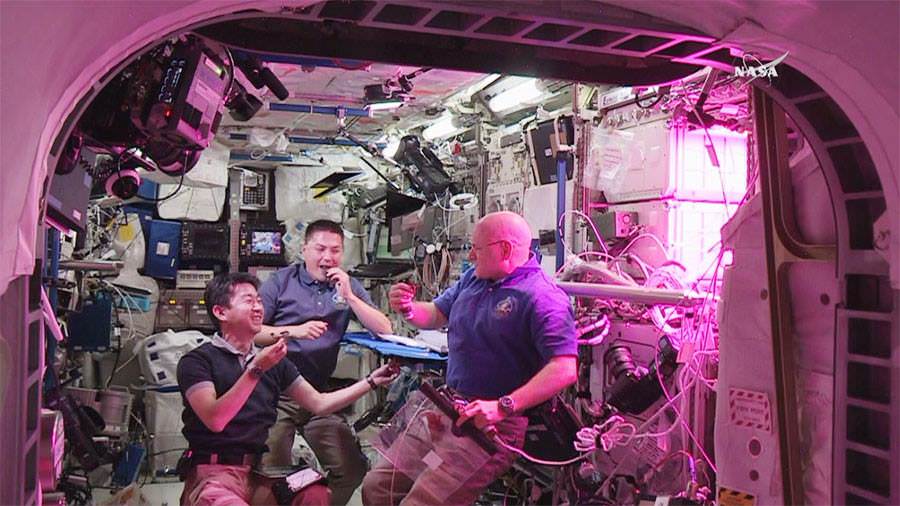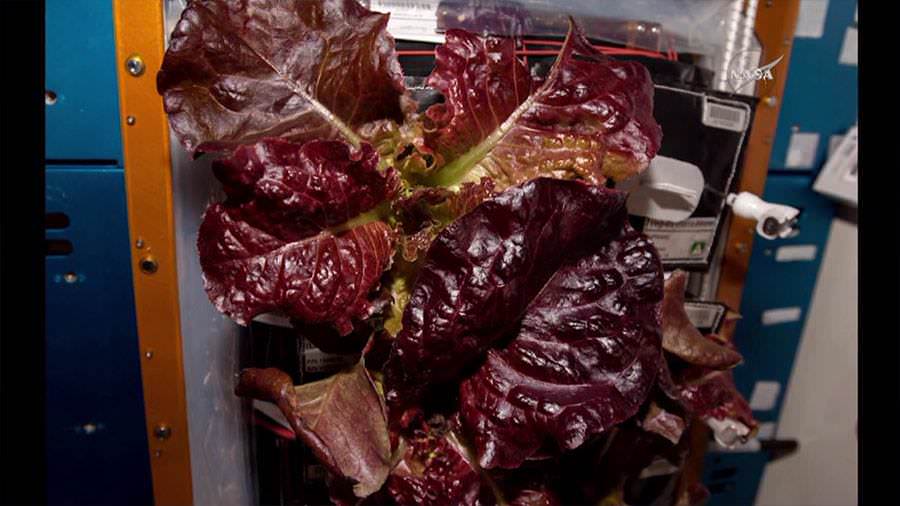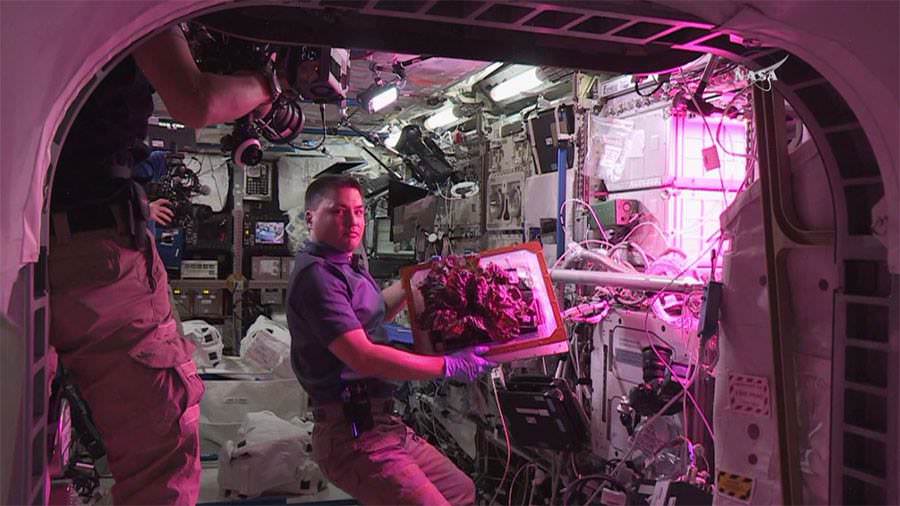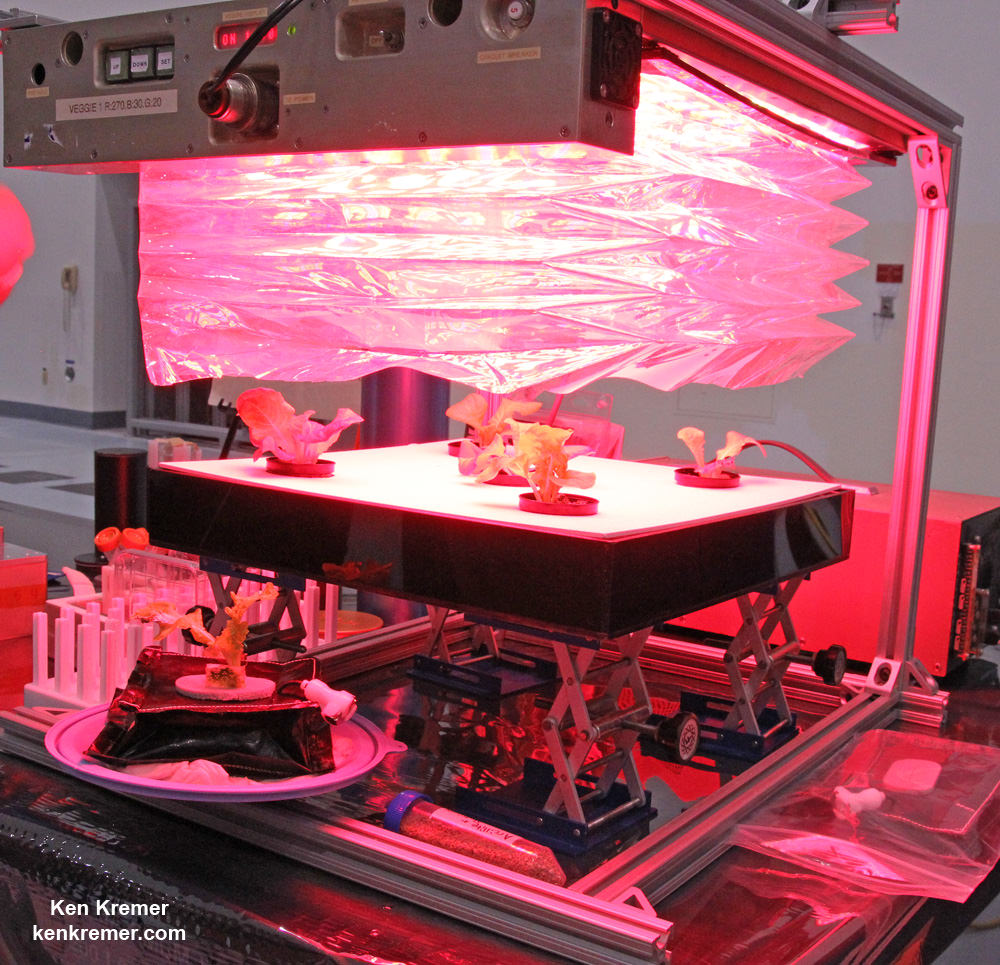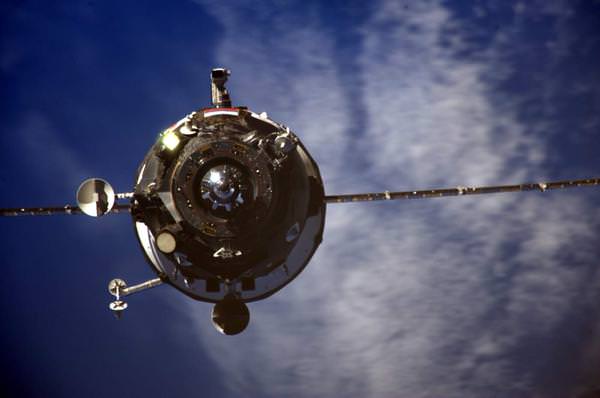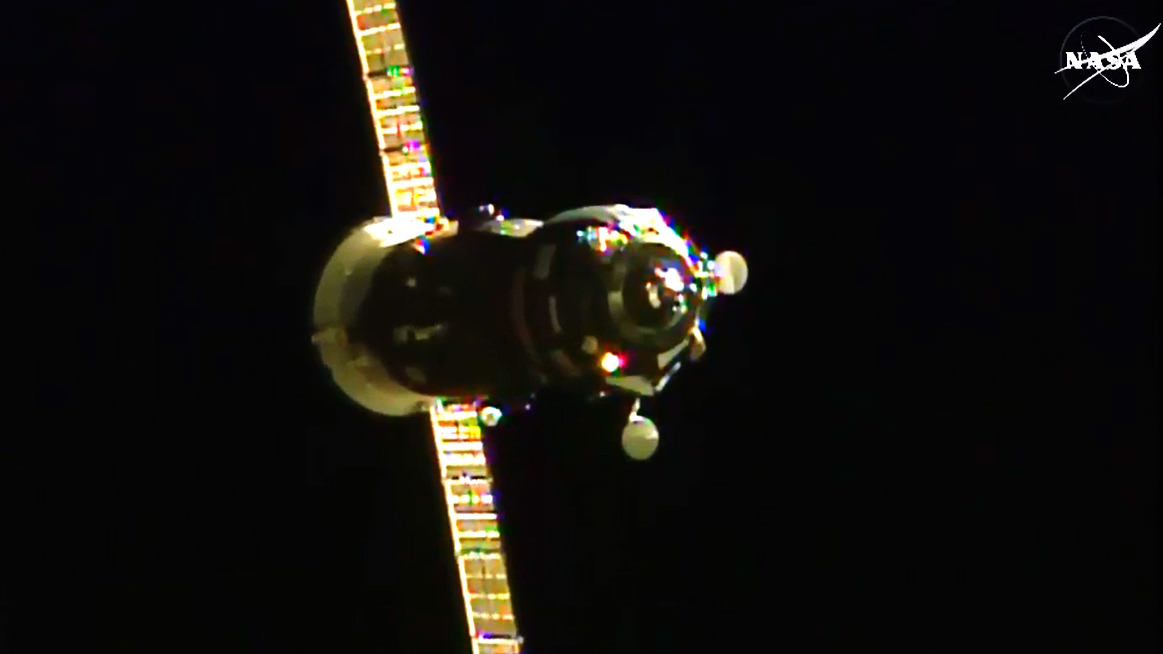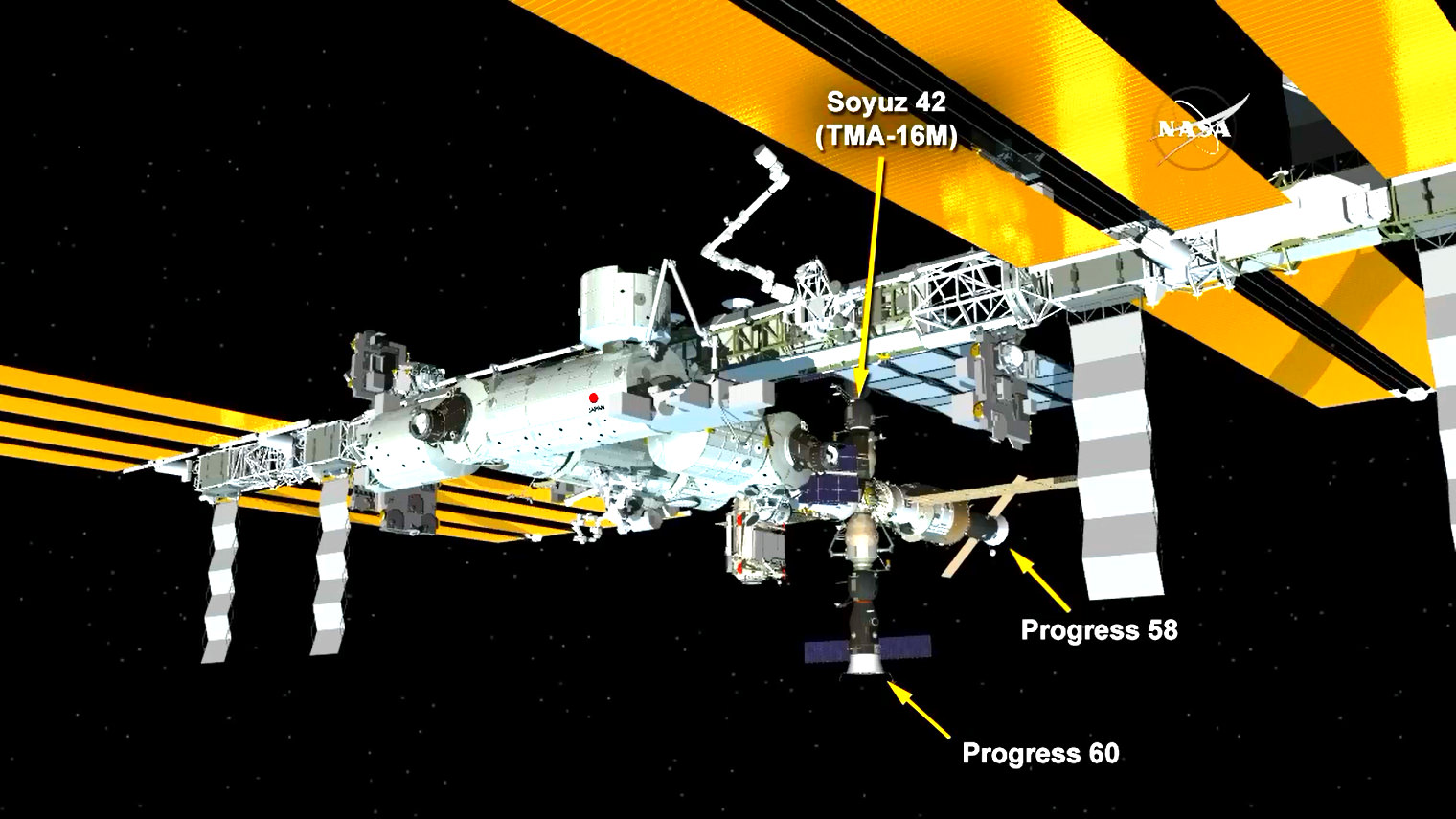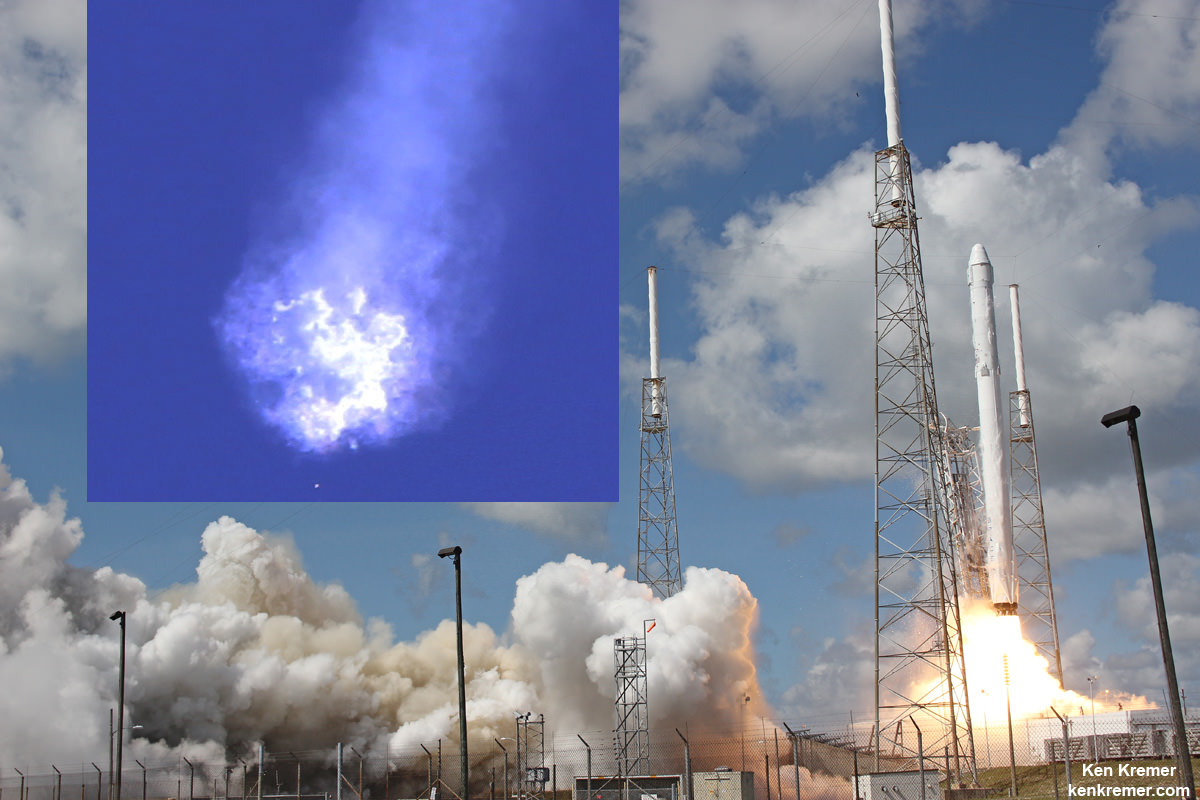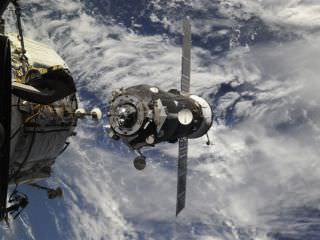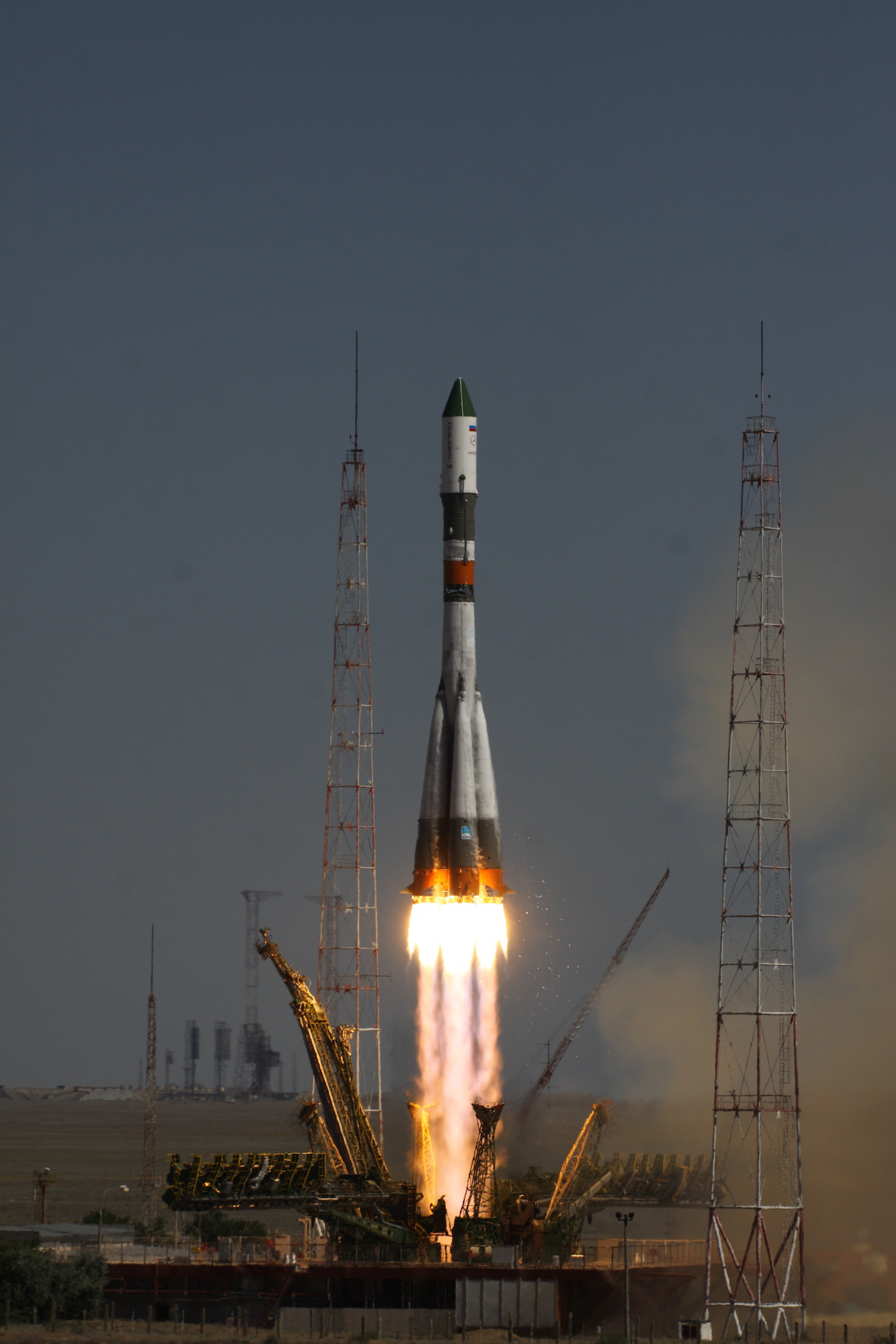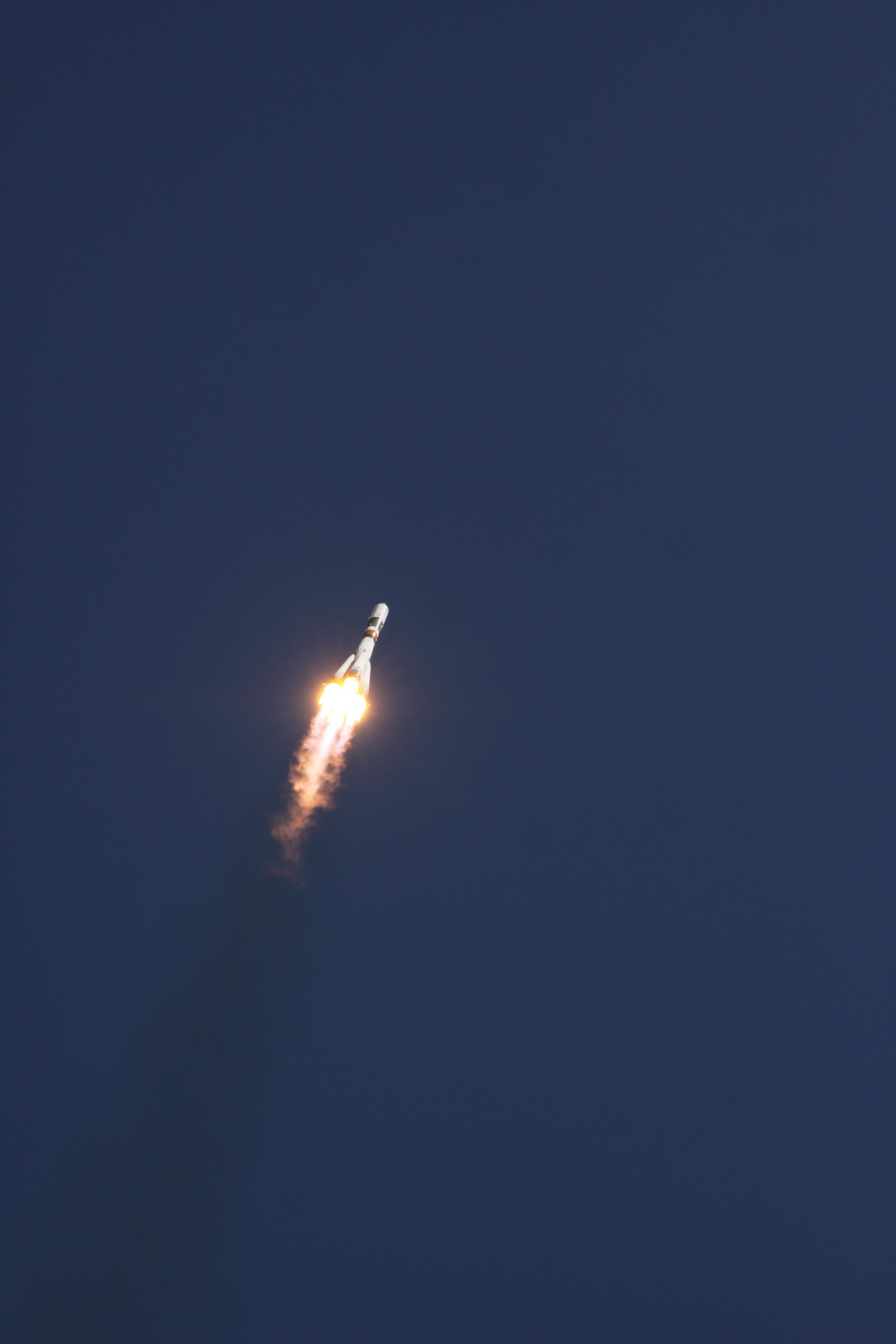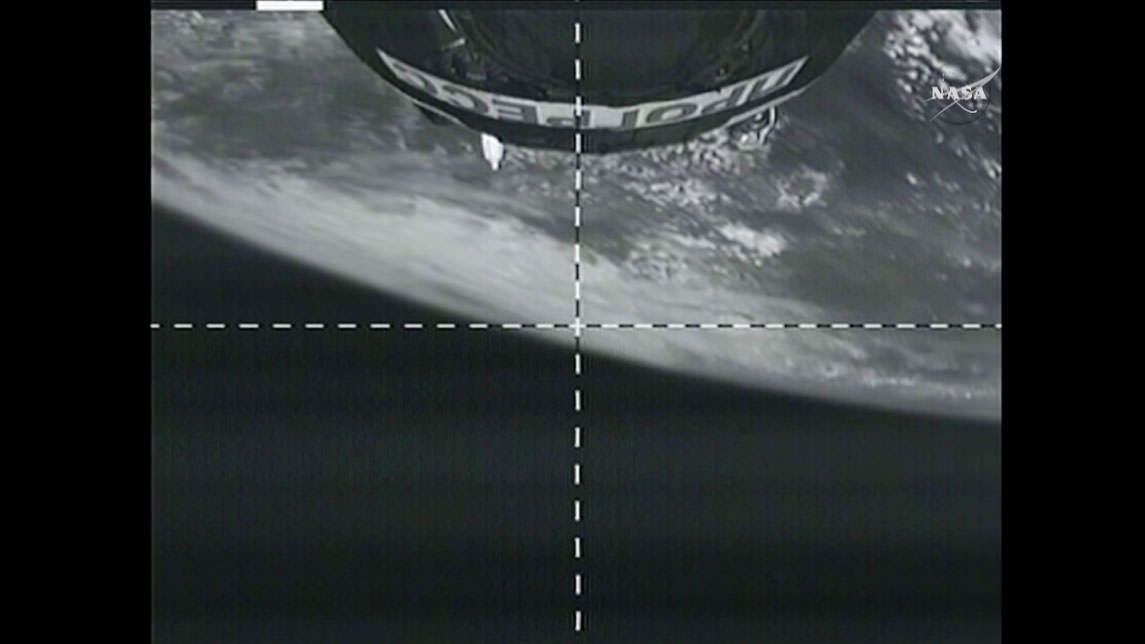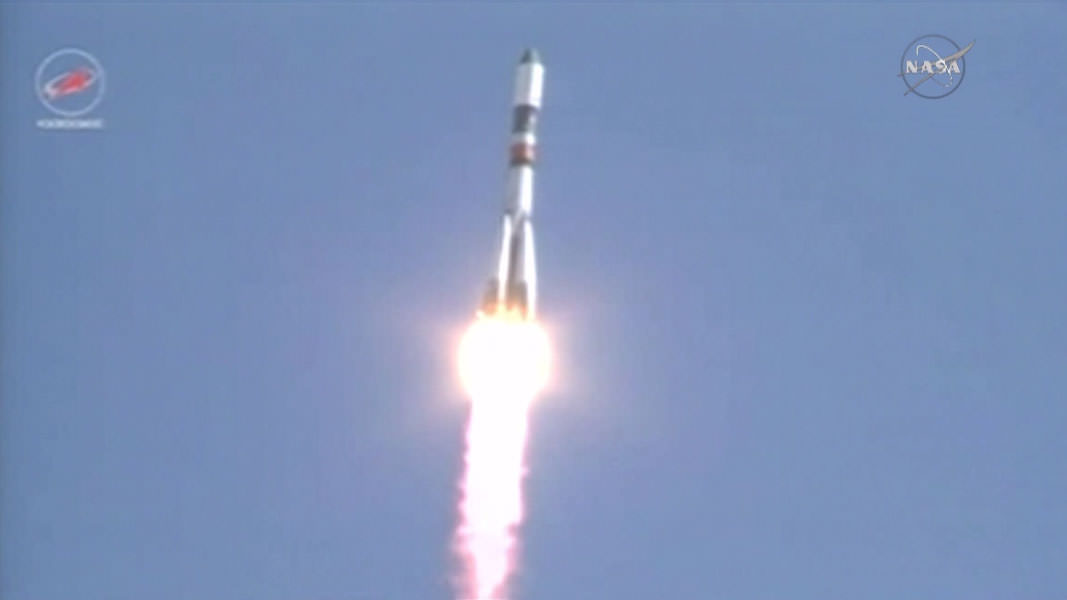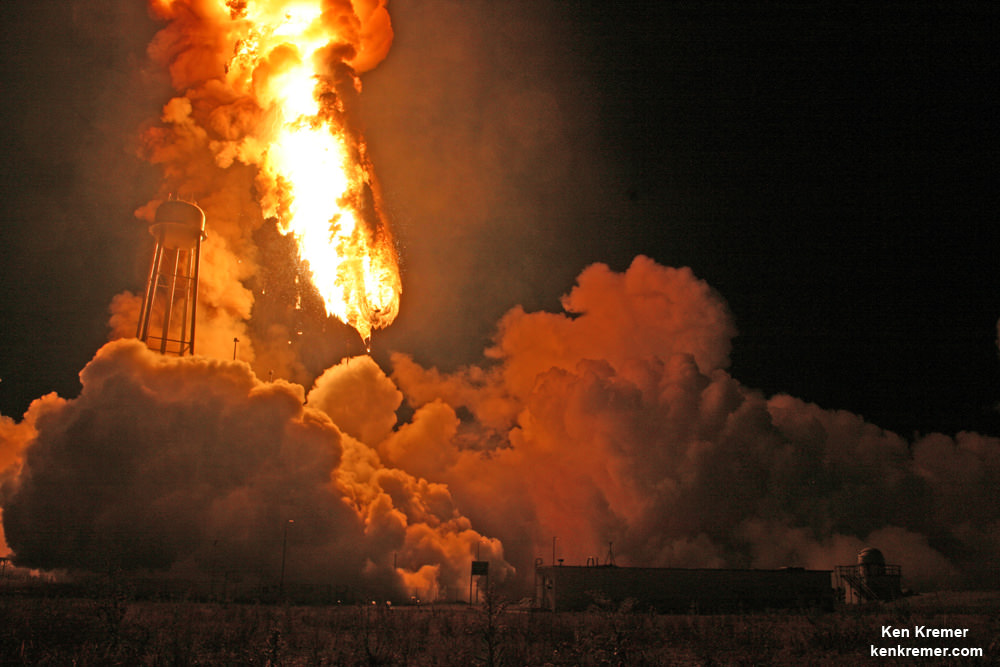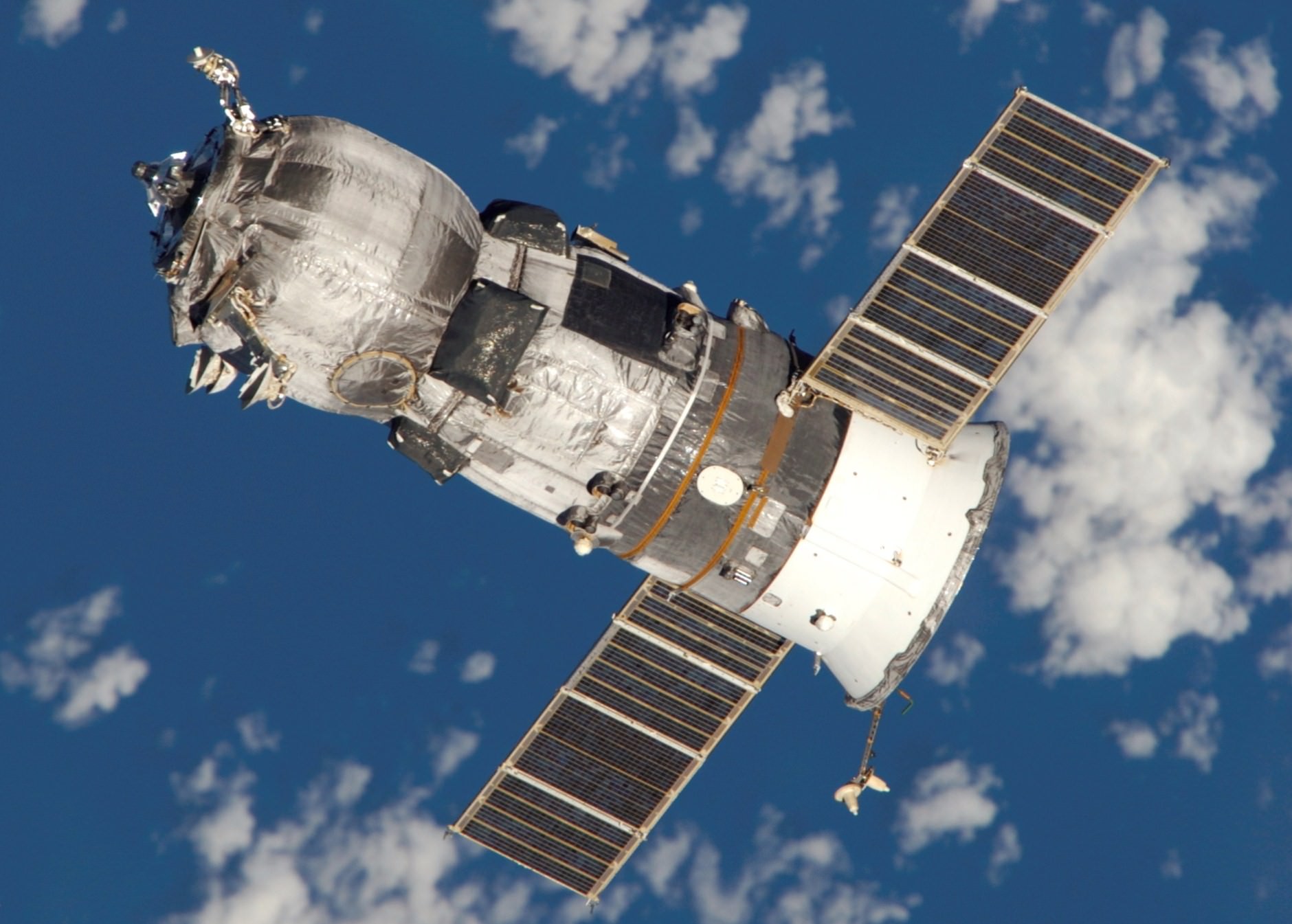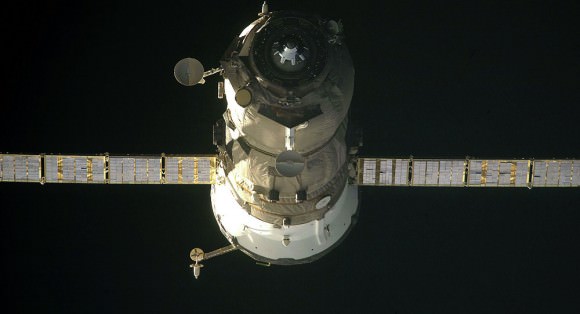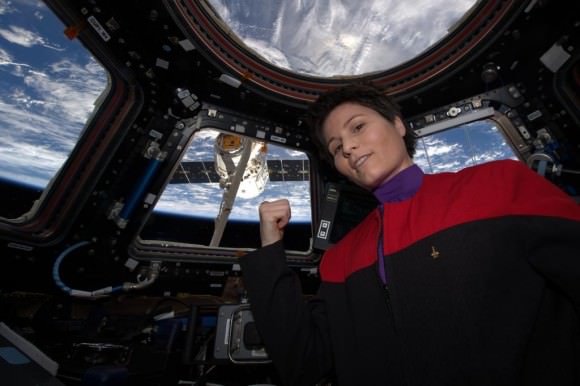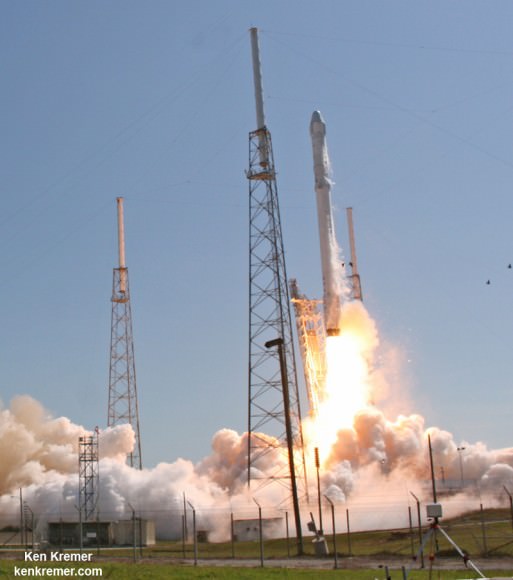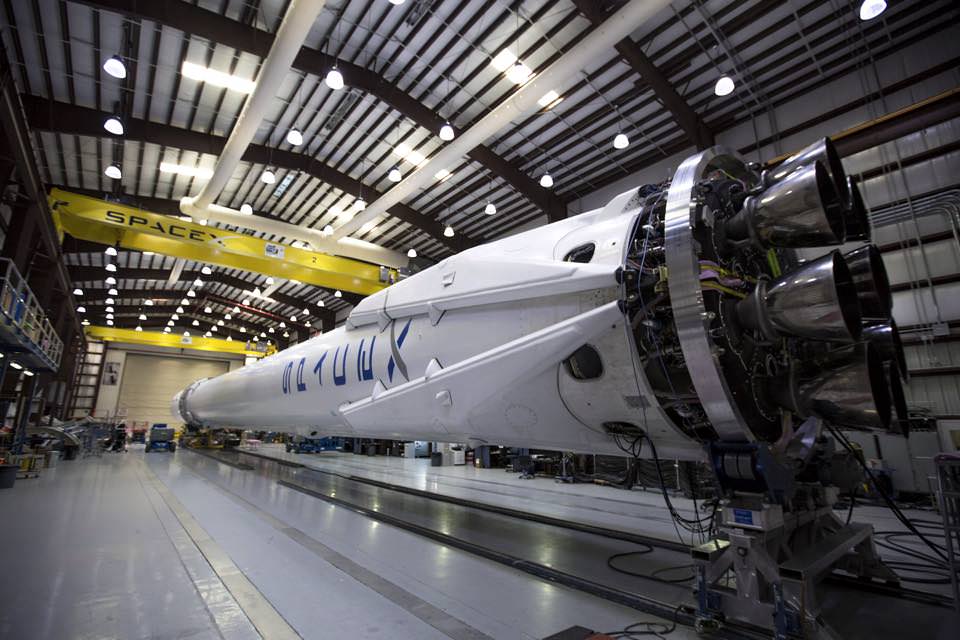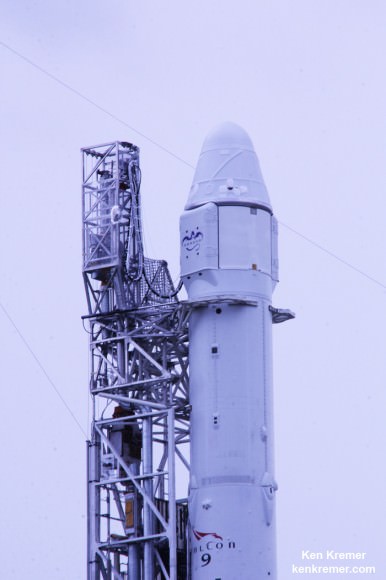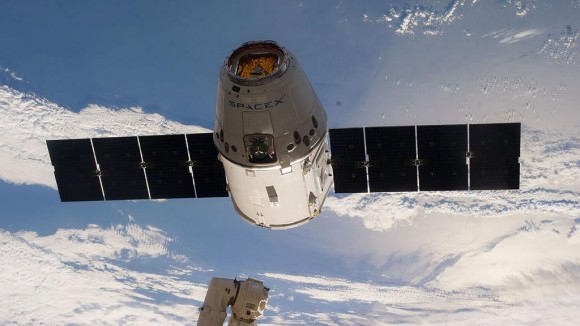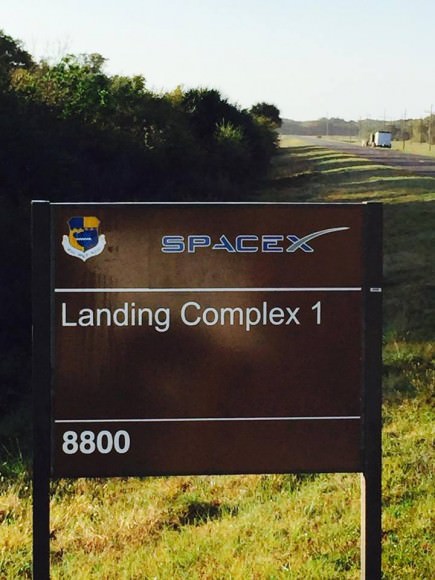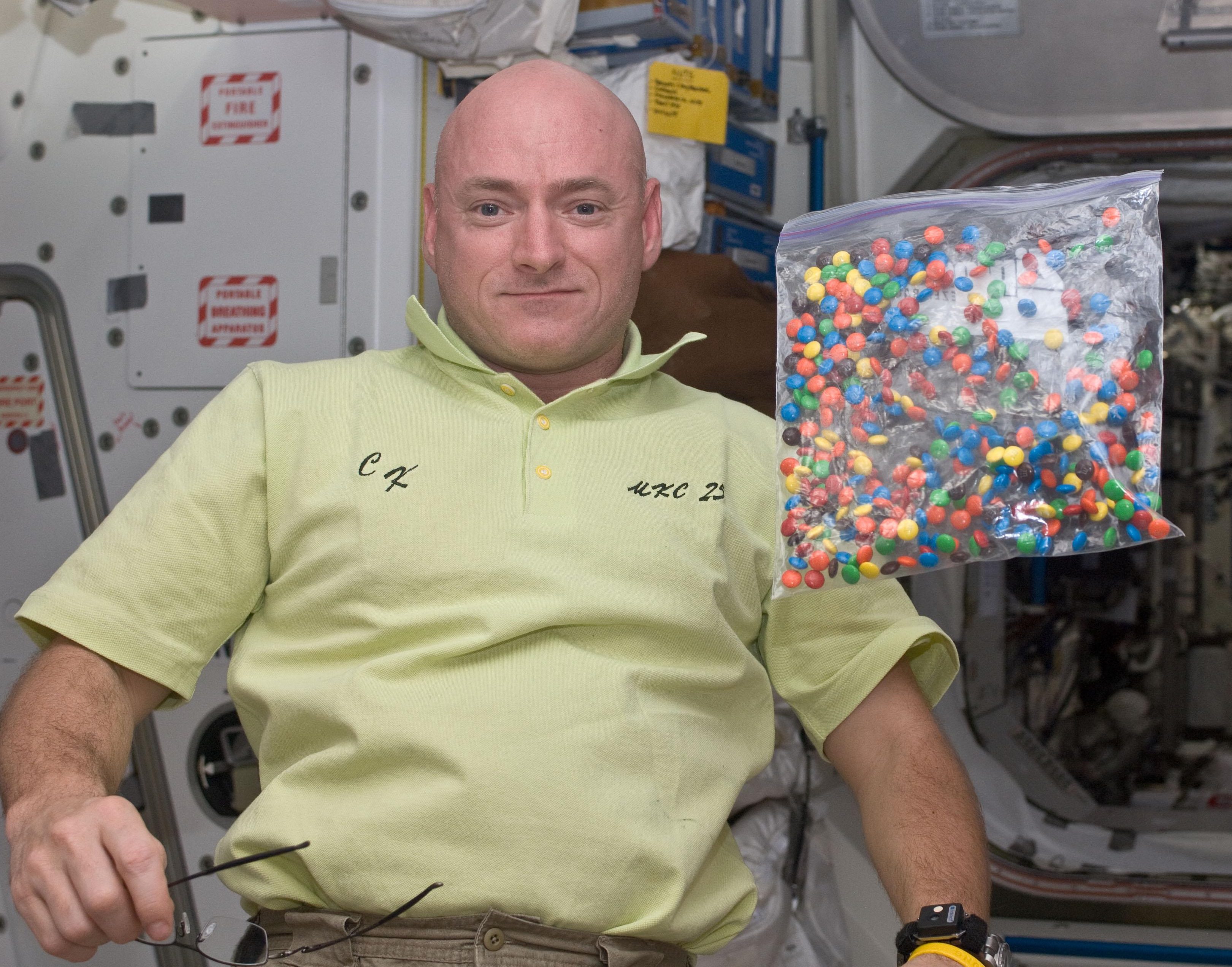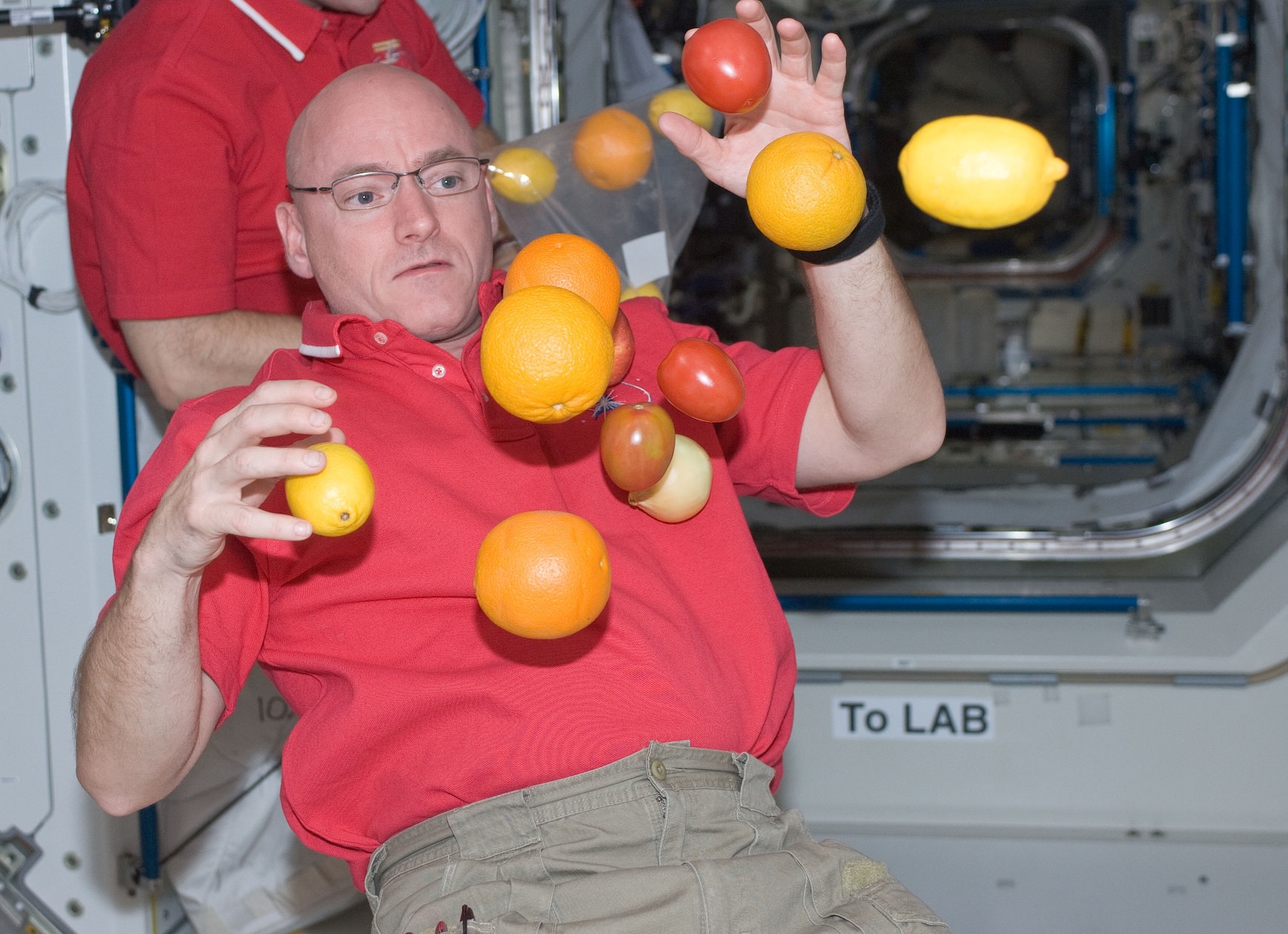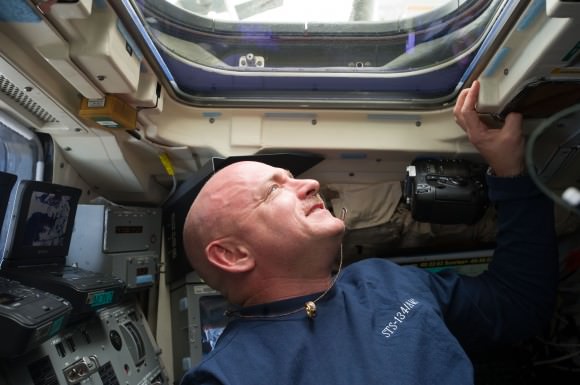The International Space Station transits the sun on Sunday, Sept. 6, 2015 with an enhanced crew of nine, as seen from Shenandoah National Park, Front Royal, VA in this composite image by NASA photographer Bill Ingalls. Credit: NASA/Bill Ingalls
Story/photos updated[/caption]
A spectacular new image taken from Earth showcases the International Space Station (ISS) transiting our Sun this past weekend, as the orbiting outpost is temporarily home to an enlarged crew of nine persons hailing from five nations.
The beautiful composite view of the ISS transiting the sun is shown above. It was released by NASA today, Sept. 8, and was created by combining a rapid fire series of five images taken on Sunday, Sept. 6, 2015 from Shenandoah National Park, Front Royal, VA, by renowned NASA photographer Bill Ingalls.
Ingalls is NASA’s top photographer for numerous space launches and NASA events worldwide.
Exquisitely careful planning is required to capture events such as this solar transit which is over in barely the wink of an eye.
The ISS was hurtling along at about 5 miles per second which has a rarely beef up complement of nine humans serving aboard for a short period of barely a week time.
The cosmonauts and astronaut crew currently aboard comprises two Americans, four Russians, and one each from Japan, Denmark and Kazakhstan; namely NASA astronauts Scott Kelly and Kjell Lindgren: Russian Cosmonauts Gennady Padalka, Mikhail Kornienko, Oleg Kononenko, Sergey Volkov, Japanese astronaut Kimiya Yui, Danish Astronaut Andreas Mogensen, and Kazakhstan Cosmonaut Aidyn Aimbetov.
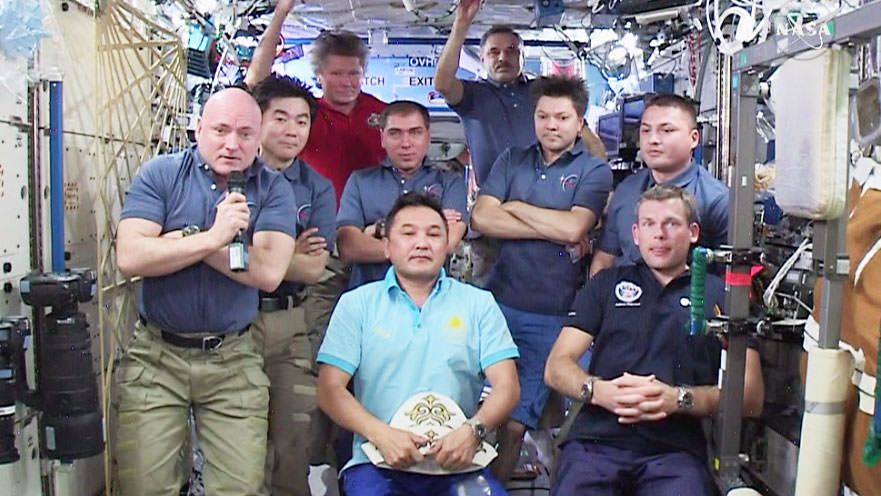
They arrived aboard three different Russian Soyuz capsules.
Among the crew are the first ever 1 year ISS mission crew comprising Scott Kelly and Mikhail Kornienko.
They arrived at the ISS in March and are now about half way through their nearly 12 month stay aimed at conducting research to explore the impact of long term stays in space on the human body and aid NASA’s long term plans for a human ‘Journey to Mars’ in the 2030s.
Kelly assumed command of the ISS on Saturday when it was formally handed over in a ceremony by Cosmonaut Gennady Padalka – who will soon depart for the voyage back home after completing his six month stint.
This marks Kelly’s second time serving as ISS commander. He was also a NASA Space Shuttle commander.
Mogensen and Aimbetov are first time space flyers and part of a short term 10 day taxi mission.
Along with Soyuz commander Sergey Volkov of Roscosmos, they launched to the ISS aboard the Soyuz TMA-18M from the Baikonur Cosmodrome in Kazakhstan this past Wednesday, Sept. 2, 2015 and docked two days later on Friday, Sept. 4.
Mogensen and Aimbetov will undock from the station on Friday, Sept. 11 along with Cosmonaut Gennady Padalka as Soyuz commander, the human with the distinction of the most time in space. Altogether Padalka will have accumulated 879 days in space over five missions, four on the space station and one on Russia’s Mir.

Since the forced retirement of NASA’s shuttle orbiters in 2011, US astronauts have been totally dependent on the Russians for trips to space and back.
Boeing and SpaceX are now building America’s next human spaceships under contracts awarded by NASA.
‘Starliner’ is the new name of Boeing’s CST-100 commercial crew transportation spaceship – as announced during the Grand Opening event for the craft’s manufacturing facility held at the Kennedy Space Center on Friday, Sept 4. 2015 and attended by Universe Today. Read my story – here.
Stay tuned here for Ken’s continuing Earth and planetary science and human spaceflight news.

